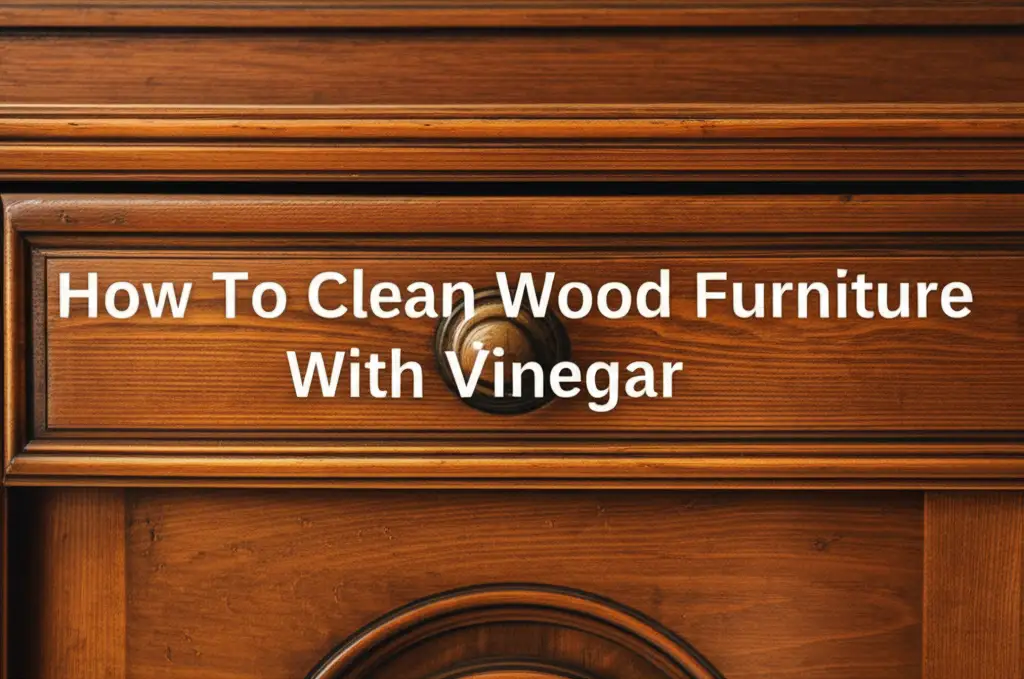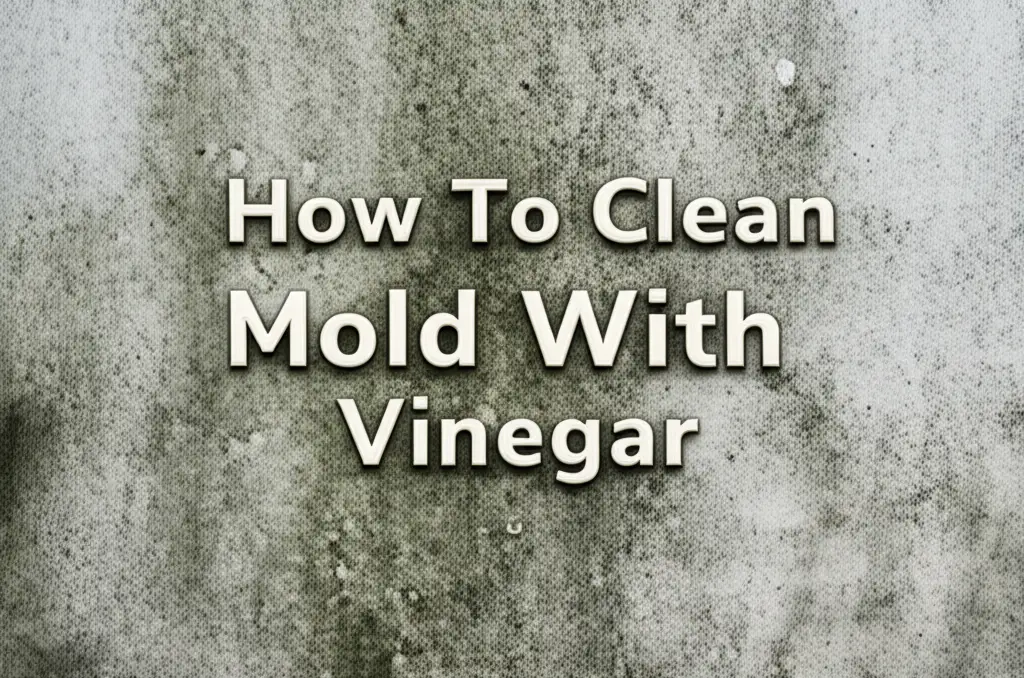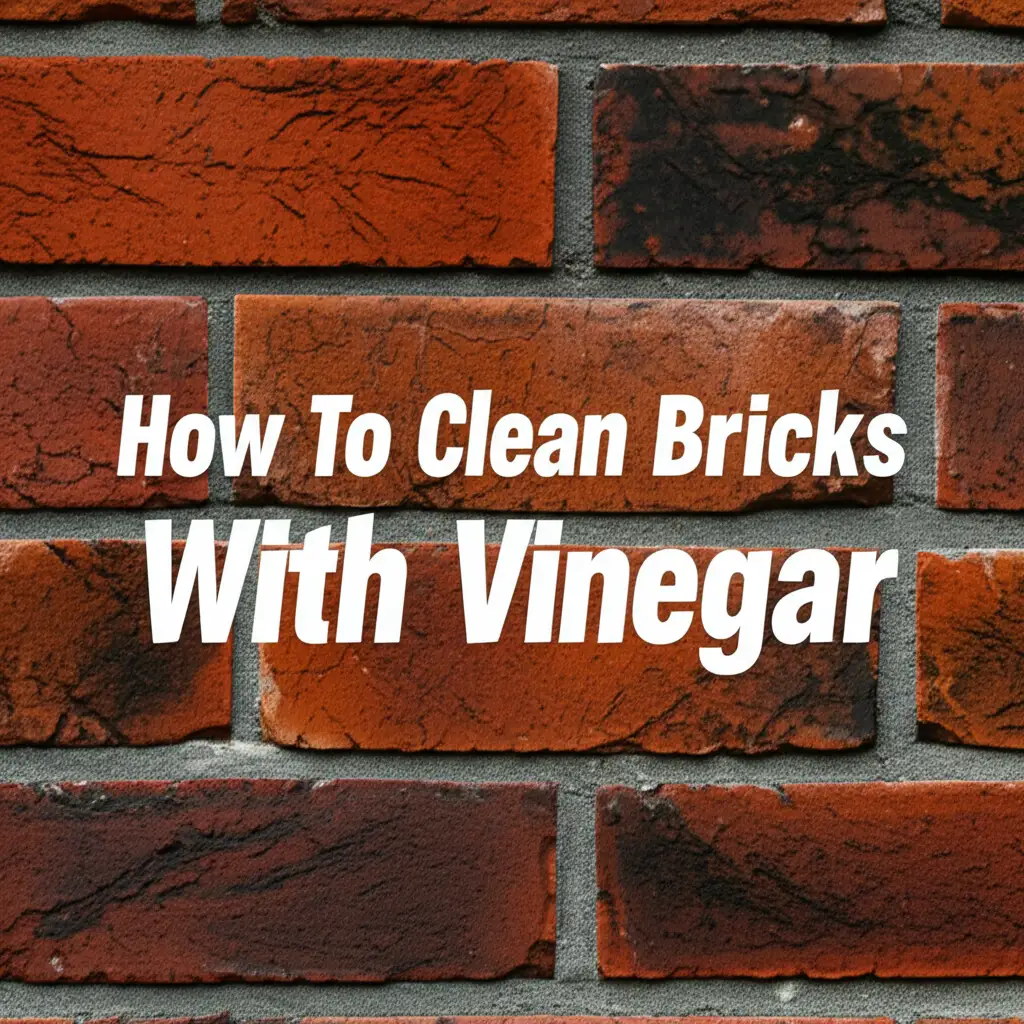· Home Cleaning · 18 min read
How To Clean Wood Furniture With Vinegar

Transform Your Wood Furniture: Cleaning with Vinegar
Do you look at your beloved wood furniture and wish it had its original shine back? Over time, wood surfaces collect dust, grime, and smudges. Harsh chemical cleaners can strip away natural oils or damage delicate finishes. However, a simple, natural solution sits in most kitchen pantries: vinegar. Learning how to clean wood furniture with vinegar offers an effective, eco-friendly, and surprisingly gentle way to restore beauty to your cherished pieces.
This guide explores the benefits of using vinegar for wood care. I will walk you through the essential steps, from preparing your workspace to applying the vinegar solution correctly. We will also cover specific cleaning challenges, like tackling tough grime or refreshing old pieces. My goal is to help you confidently clean your wood furniture, bringing back its luster without harsh chemicals. Prepare to discover the power of this everyday household item for stunning results.
Takeaway
- Always test vinegar solutions on an inconspicuous area first.
- Use diluted vinegar for most wood cleaning tasks.
- Wipe wood immediately after cleaning to prevent moisture damage.
- Address specific issues like grime or odors with targeted vinegar mixtures.
- Regular maintenance keeps wood furniture looking its best.
How to clean wood furniture with vinegar? You clean wood furniture with vinegar by mixing equal parts white vinegar and water. Dampen a soft cloth with this solution, wring it almost dry, and wipe the wood surface. Immediately follow with a dry, clean cloth to remove all moisture. Always test this solution on a hidden spot first.
Why Choose Vinegar for Cleaning Wood Furniture?
Many people wonder why vinegar is a good choice for cleaning wood furniture. White vinegar is a natural acid. This acidic nature helps it break down dirt, grime, and sticky residues. It does this without the harsh chemicals found in many commercial cleaners. I find its natural properties very appealing for household cleaning tasks.
Vinegar also acts as a natural deodorizer. It helps remove stale smells that can cling to old furniture. This means your wood pieces will not just look clean, but they will smell fresh too. Using vinegar is a simple way to achieve a truly clean environment.
Another great benefit is its affordability and availability. Vinegar is inexpensive and easy to find at any grocery store. This makes it a cost-effective alternative to specialized wood cleaners. You can clean your entire home without breaking the bank.
Finally, using vinegar is an environmentally friendly choice. It is biodegradable and does not pollute waterways. This commitment to green cleaning aligns with my values. When you use vinegar, you are making a healthier choice for your home and the planet.
Is Vinegar Safe for All Wood Furniture Finishes?
Understanding if vinegar is safe for your specific wood furniture finish is very important. While vinegar is a powerful cleaner, it is acidic. This acidity can sometimes react poorly with certain types of finishes. I always recommend caution before applying it broadly.
Most modern wood furniture has durable polyurethane, lacquer, or varnish finishes. Vinegar, when diluted properly, is generally safe for these types of finishes. These finishes create a protective barrier over the wood. This barrier prevents the vinegar from directly contacting the wood itself.
However, older or antique furniture often has different finishes. These might include shellac, wax, or oil finishes. These older finishes are more delicate. Undiluted or even strong diluted vinegar can strip away wax, dissolve shellac, or dry out oil finishes. This can leave the wood dull or damaged. If you are dealing with very old pieces, you might need a different approach. You can find more information on cleaning specific issues on antique wood furniture here.
Always perform a patch test before cleaning the entire piece. Choose a hidden area, like the back of a leg or inside a drawer. Apply a small amount of your diluted vinegar solution. Wait a few minutes, then wipe it off and check for any adverse reactions. This simple step prevents potential damage and gives you peace of mind.
H3: Identifying Your Wood Finish Type
Knowing your wood finish helps you choose the right cleaning method. It protects your furniture. You can do a simple test at home.
- Scratch Test: Gently scratch an inconspicuous area with your fingernail. If a clear mark appears, it might be wax or oil. Polyurethane and lacquer are harder and will not scratch easily.
- Alcohol Test: Dampen a cotton swab with rubbing alcohol. Dab it on a hidden spot. If the finish softens or transfers to the swab, it is likely shellac or lacquer. Be very gentle with this test.
- Water Drop Test: Place a drop of water on the surface. If it beads up, it is a sealed finish like polyurethane or varnish. If it soaks in quickly, it is likely an oil or wax finish.
Once you know the finish, you can decide on the best vinegar dilution. This ensures safe and effective cleaning.
Gathering Your Supplies for Effective Vinegar Cleaning
Before you begin cleaning your wood furniture with vinegar, collect all necessary supplies. Having everything ready makes the process smoother. This preparation also ensures you clean effectively and safely. I always gather my tools before starting any cleaning project.
You will need white distilled vinegar. This type of vinegar is essential because it is clear and will not stain your wood. Apple cider vinegar is not suitable due to its color and potential for residue. So, stick with plain white vinegar.
Next, get a clean spray bottle. This bottle helps you mix and apply the solution evenly. It also prevents oversaturation of the wood. A spray bottle gives you good control over the amount of liquid.
Prepare several soft, clean cloths. Microfiber cloths work best. They are very absorbent and non-abrasive. This means they will not scratch your furniture. You will need one cloth for applying the solution and at least two for drying.
You also need a bucket or bowl for mixing. A measuring cup helps you get the correct proportions of vinegar and water. Precision matters when diluting cleaning solutions. For tough dirt buildup on wood, you might want a soft-bristle brush, but use it with extreme care. Cleaning dirt buildup on wood properly is crucial.
Finally, have some clean, dry towels ready for immediate drying. Wood and excess moisture do not mix well. Quick drying prevents water spots or damage. These basic supplies will set you up for success in cleaning your wood furniture.
Step-by-Step Guide: Cleaning Wood Furniture with Vinegar
Ready to make your wood furniture shine? This step-by-step guide walks you through the entire process of cleaning with vinegar. Follow these simple instructions for the best results. I find this method both effective and straightforward.
H3: Pre-Cleaning Preparation
First, clear the furniture piece. Remove all items from its surface. This includes lamps, books, and decorative objects. Wipe away any loose dust or debris. Use a dry microfiber cloth or a soft duster for this. This initial dusting prevents dirt from turning into muddy streaks during cleaning.
H3: Mixing the Vinegar Solution
Now, it is time to mix your cleaning solution. For most general wood furniture cleaning, a 1:1 ratio of white distilled vinegar to water works well. Pour equal parts of vinegar and water into your spray bottle. For example, if you use 1 cup of vinegar, use 1 cup of water. Gently shake the bottle to combine the liquids.
For very delicate or antique wood, you might start with a weaker solution. Try 1 part vinegar to 4 parts water. You can always increase the vinegar concentration if needed. Remember, a patch test is vital before applying it everywhere.
H3: Applying the Solution Safely
Do not spray the solution directly onto the wood surface. Instead, lightly mist a clean microfiber cloth with your vinegar solution. The cloth should be damp, not soaking wet. Wring out any excess liquid from the cloth.
Now, gently wipe the wood surface. Work in small sections. Always wipe in the direction of the wood grain. This helps lift dirt from the natural grooves of the wood. Apply light to medium pressure.
H3: Immediate Drying and Buffing
This step is critical. After wiping a section with the damp cloth, immediately follow with a separate clean, dry microfiber cloth. Thoroughly dry the entire area you just cleaned. Do not let the vinegar solution sit on the wood for more than a few seconds.
Buff the dry surface with another clean, dry cloth. This helps remove any remaining moisture and enhances the shine. This immediate drying prevents water marks and protects the wood finish. It ensures your wood furniture looks its best.
Repeat these steps until you have cleaned the entire piece of furniture. You will notice a visible difference in cleanliness and shine.
Addressing Specific Wood Furniture Issues with Vinegar
Vinegar is not just for general cleaning; it can tackle specific problems on wood furniture too. I have found it incredibly versatile. These targeted approaches can save many pieces from looking worn out.
H3: Removing Water Marks and Rings
Those annoying white water rings can ruin the look of a wood table. Vinegar can often help. Mix equal parts white vinegar and olive oil. Apply this mixture to the water mark with a soft cloth. Gently rub in the direction of the wood grain.
The vinegar helps dissolve the mineral deposits causing the mark. The olive oil helps condition the wood and restore its luster. Continue rubbing until the mark fades. Then, wipe clean with a dry cloth. This method often works wonders on fresh water marks.
H3: Eliminating Grime and Buildup
Over time, wood furniture can accumulate stubborn grime and sticky residue. This is especially true in kitchens or dining areas. For heavy dirt buildup on wood, a slightly stronger vinegar solution helps. Mix 1 part white vinegar with 2 parts warm water. You can also add a few drops of mild dish soap for extra degreasing power.
Dampen a cloth with this mixture. Gently scrub the grimy areas. For very tough spots, a soft-bristle brush can assist, but use it carefully to avoid scratching the finish. Remember to wipe in the direction of the wood grain. Immediately dry the area thoroughly with a clean, dry cloth. This method effectively lifts sticky messes and leaves the surface clean. For more detailed instructions on how to clean dirt buildup on wood, you can consult this article.
H3: Neutralizing Odors and Refreshing Wood
Old furniture often carries musty or stale odors. Vinegar is an excellent natural deodorizer. To refresh wood, simply wipe down the surfaces with your standard 1:1 vinegar and water solution. The acetic acid in vinegar neutralizes odor-causing bacteria.
If the odor is deeply embedded, you can try placing a bowl of undiluted white vinegar inside a closed drawer or cabinet. Leave it overnight. The vinegar absorbs the smells. Afterwards, air out the furniture thoroughly. This technique leaves your wood furniture smelling fresh and clean. This is a common method for freshening up various items, as seen in methods like cleaning with vinegar and baking soda for other household applications.
H3: Addressing Mold and Mildew Stains
Mold and mildew can grow on wood furniture, especially in humid environments. Vinegar is an effective anti-fungal agent. For mold spots, use undiluted white vinegar in a spray bottle. Spray directly onto the moldy area. Let it sit for about an hour.
Then, scrub the area with a soft brush or cloth to remove the mold. Immediately wipe dry. For severe mold issues, repeated applications might be necessary. Always wear gloves and ensure good ventilation when dealing with mold. You can find more comprehensive guides on how to clean mold off of wood furniture here and for how to clean black mold off wood, please see this resource.
Maintaining Your Wood Furniture After Cleaning
Cleaning your wood furniture is a great start. However, proper maintenance after cleaning ensures its long-term beauty. I believe consistent care makes a huge difference. These simple steps keep your pieces looking their best.
First, consider applying a good wood conditioner or polish. After cleaning with vinegar, the wood surface is pristine. This is the perfect time to replenish its oils and protect the finish. Choose a product suitable for your specific wood type and finish. Apply it according to the manufacturer’s instructions. This step enhances the wood’s natural luster and creates a barrier against future dirt and moisture.
Regular dusting is another crucial part of maintenance. Dust particles are abrasive. They can scratch your wood finish over time. Use a soft, dry microfiber cloth for daily or weekly dusting. Avoid using feather dusters, as they often just move dust around rather than picking it up. Consistent dusting prevents buildup and reduces the need for frequent deep cleaning.
Protect your wood furniture from direct sunlight and extreme temperatures. Sunlight can fade wood finishes and cause the wood to dry out or crack. Place furniture away from windows or use curtains and blinds to filter light. Extreme temperature changes, like those near radiators or air conditioning vents, can also damage wood. Maintain a stable indoor environment.
Use coasters, placemats, and tablecloths. These simple items provide an effective barrier against spills, heat marks, and scratches. They are inexpensive and can save your furniture from permanent damage. Always lift items rather than dragging them across the surface.
Finally, address spills immediately. Even a small liquid spill can cause significant damage if left unchecked. Blot spills gently with a clean, dry cloth. Do not rub, as this can spread the liquid or push it deeper into the wood. Quick action prevents stains and warping. Consistent maintenance helps your wood furniture remain beautiful for many years.
Common Mistakes to Avoid When Using Vinegar on Wood
Using vinegar for cleaning wood furniture is effective, but mistakes can cause damage. Knowing what not to do is just as important as knowing what to do. I have learned these lessons through experience. Avoiding these pitfalls will ensure your furniture stays beautiful.
One common mistake is using undiluted vinegar too often or on the wrong finishes. While undiluted vinegar is great for certain tough stains or mold, it is too harsh for regular cleaning. It can strip wax, dull delicate finishes, and even dry out some wood types. Always dilute white vinegar with water for routine cleaning, usually a 1:1 ratio. Remember to perform a patch test first, especially on older pieces or unknown finishes.
Another error is oversaturating the wood. Applying too much liquid is detrimental to wood furniture. Wood absorbs moisture. Excess water or vinegar solution can lead to swelling, warping, or discoloration. It can also cause the finish to lift. Always dampen your cloth, then wring it out thoroughly until it is almost dry. Never spray the solution directly onto the wood surface, as this can lead to uneven application and too much moisture.
Failing to dry the wood immediately is a critical mistake. Wood and lingering moisture are enemies. If you leave the vinegar solution to air dry, it can cause water spots, streaks, or even permanent damage. After wiping a section with the damp cloth, immediately follow with a separate clean, dry cloth to thoroughly dry and buff the surface. This step prevents water damage and enhances the shine.
Using abrasive cloths or scrubbers is another pitfall. While wood is durable, its finish can be delicate. Steel wool, rough sponges, or abrasive cloths can scratch the finish, leaving permanent marks. Always use soft microfiber cloths. If you need to tackle a stubborn spot, opt for a very soft-bristle brush, using minimal pressure.
Lastly, neglecting post-cleaning care is a mistake. After cleaning, the wood is fresh but might need conditioning. Failing to re-wax or oil certain finishes, or not applying a wood conditioner, can leave the wood vulnerable. Regular maintenance, including re-applying protective layers as needed, extends the life and beauty of your wood furniture. Avoiding these common errors ensures a safe and successful wood cleaning experience with vinegar.
Comparing Vinegar with Other Wood Cleaners
When considering how to clean wood furniture, many options exist beyond vinegar. Commercial wood cleaners, oil-based cleaners, and even simple soap and water are common. I think it is important to understand how vinegar stands out among these. Each option has its own pros and cons.
Commercial wood cleaners are convenient. They often come in ready-to-use sprays. Many contain conditioning agents that claim to nourish wood. However, these products can also contain harsh chemicals, synthetic fragrances, and silicones. Silicones can build up over time, leaving a sticky residue. This residue attracts more dirt and can make future refinishing difficult. For those concerned about chemical exposure, these cleaners might not be the best choice.
Oil-based cleaners, like those containing lemon oil or orange oil, are popular for conditioning wood. They do a good job of adding shine and moisturizing dry wood. However, they can leave an oily residue. This residue can attract dust and grime over time. They also might not be the best for deep cleaning heavy dirt buildup. Their primary role is often more about conditioning than cleaning.
Soap and water is another simple option. A very mild dish soap diluted in water can clean surfaces. However, soap can leave a dull film if not rinsed properly. Also, like vinegar, too much water can damage wood. It requires careful application and immediate drying. This method often lacks the deodorizing and mild acid benefits of vinegar for breaking down tough grime.
Vinegar offers a unique balance. It is a powerful degreaser and dirt remover due to its mild acidity. It also acts as a natural deodorizer. Unlike commercial cleaners, it leaves no chemical residue or synthetic fragrances. Unlike oil-based cleaners, it truly cleans rather than just conditioning over dirt. When used correctly and diluted, it is gentle on most finishes. It is also significantly more affordable and environmentally friendly than many alternatives. For cleaning accumulated grime and refreshing wood, vinegar is often my first choice. It strikes a balance between effectiveness, safety, and natural properties that other cleaners do not always achieve.
Frequently Asked Questions About Cleaning Wood Furniture with Vinegar
Q1: Can I use apple cider vinegar instead of white vinegar?
No, you should not use apple cider vinegar. Always use white distilled vinegar for cleaning wood furniture. Apple cider vinegar has a darker color due to its natural pigments. This can potentially stain your wood furniture, especially lighter-colored woods. White vinegar is clear and leaves no color residue behind, making it the safer and more effective choice for this task.
Q2: How often should I clean my wood furniture with vinegar?
The frequency depends on how much your furniture is used and how dirty it gets. For high-traffic pieces, a light wipe down with diluted vinegar every few weeks might be enough. Less-used items might only need cleaning every few months. Avoid over-cleaning. Excessive use of any liquid, even diluted vinegar, can eventually affect the finish. Regular dusting is more important for daily maintenance.
Q3: Will vinegar remove the shine from my wood furniture?
When used correctly, diluted vinegar should not remove the shine from most durable wood finishes. In fact, it often helps restore a natural luster by removing grime and dulling buildup. The key is to dilute it properly and immediately dry the surface thoroughly. Leaving vinegar to sit on the wood or using it undiluted on delicate finishes can dull the shine over time.
Q4: Can vinegar repair scratches on wood furniture?
No, vinegar cannot repair scratches on wood furniture. Vinegar is a cleaning agent that removes dirt and grime. It does not have properties that fill in or smooth out physical damage like scratches. For minor scratches, you might use products like wood repair markers or scratch cover polishes. Deeper scratches usually require professional repair or more specialized DIY methods.
Q5: What if my wood furniture still smells after cleaning with vinegar?
If your wood furniture still smells, the odor might be deeply embedded. Try placing a bowl of undiluted white vinegar inside a closed drawer or cabinet for 24-48 hours. The vinegar absorbs odors. You can also try airing out the furniture outdoors on a dry, non-humid day. For persistent, strong odors, especially from mold or mildew, you may need professional help or specialized wood treatments.
Q6: Can I add essential oils to the vinegar solution for a pleasant smell?
Yes, you can add a few drops of essential oil to your vinegar solution. This can help mask the vinegar smell and leave a pleasant scent on your furniture. Good choices include lemon, orange, lavender, or tea tree oil. Just ensure you use pure essential oils and add only a small amount, typically 5-10 drops per cup of solution. Test this mixture on an inconspicuous area first.
Conclusion
Cleaning your wood furniture with vinegar is a simple, effective, and natural way to bring back its original beauty. I have shared how to safely use this common household item to remove dirt, grime, and odors. We covered preparing your workspace, mixing the right solution, and the vital step of immediate drying. You now understand how to tackle specific issues like water marks and even mold, all with the power of white vinegar.
Remember, the key to success lies in proper dilution, using soft cloths, and drying the wood quickly. Always test a small, hidden area first, especially on older pieces. This ensures the vinegar solution is safe for your specific finish. By avoiding common mistakes and practicing regular maintenance, your wood furniture will stay beautiful for many years. Embrace the power of natural cleaning. Give your wood furniture the care it deserves with vinegar, and watch it shine. Start cleaning your wood furniture with vinegar today and see the remarkable difference for yourself!
- wood cleaning
- vinegar cleaning
- furniture care
- natural cleaning
- DIY cleaning
- wood furniture maintenance
- home cleaning tips




